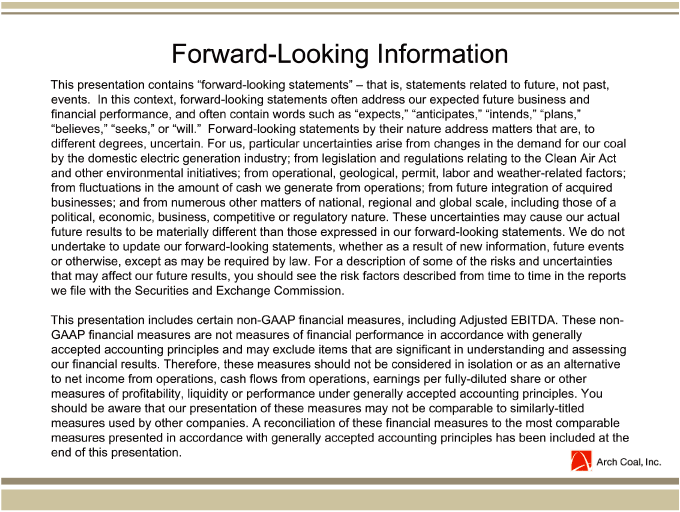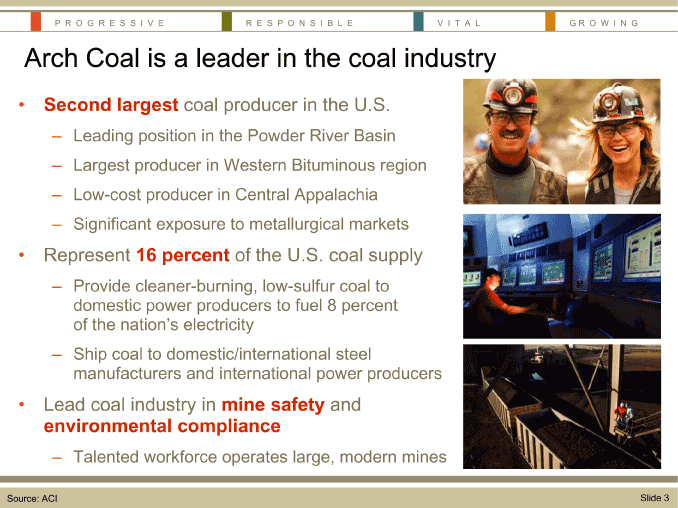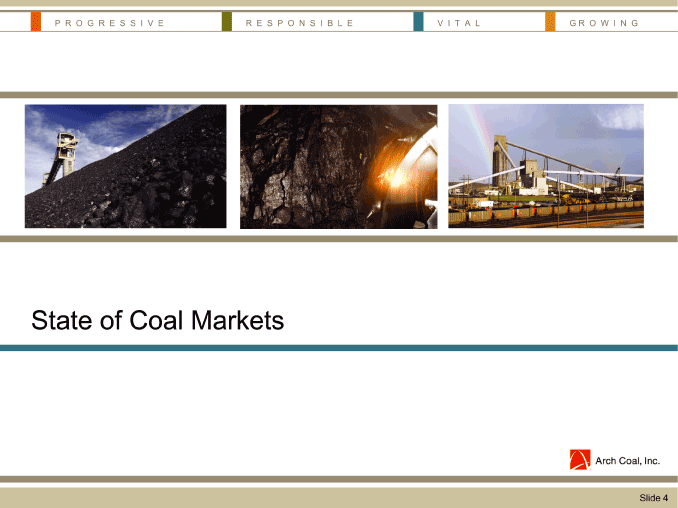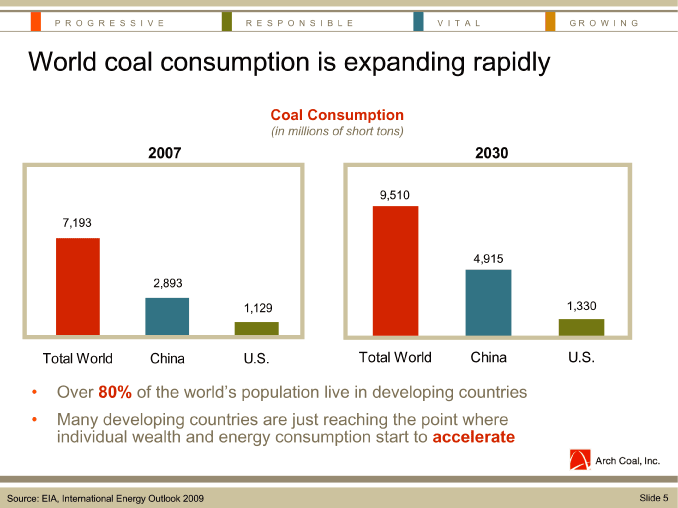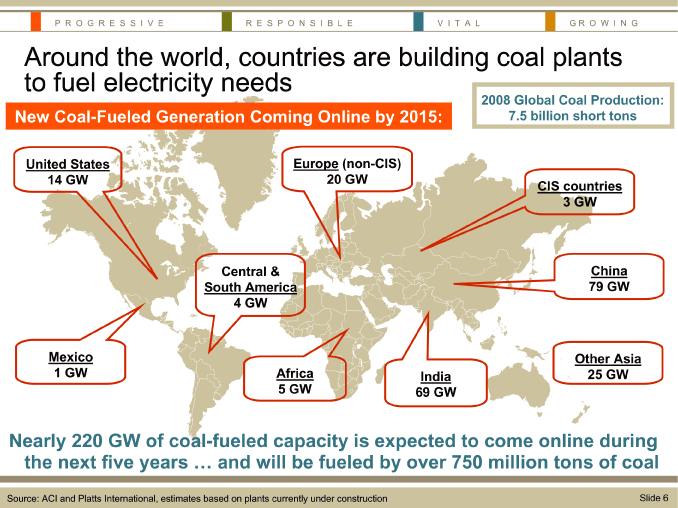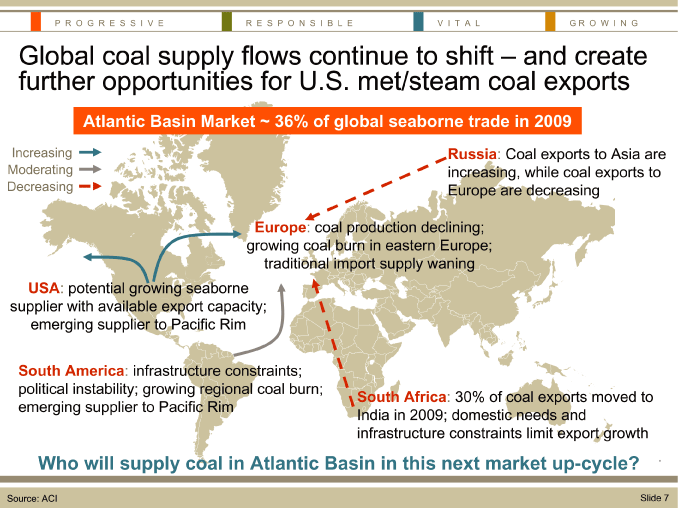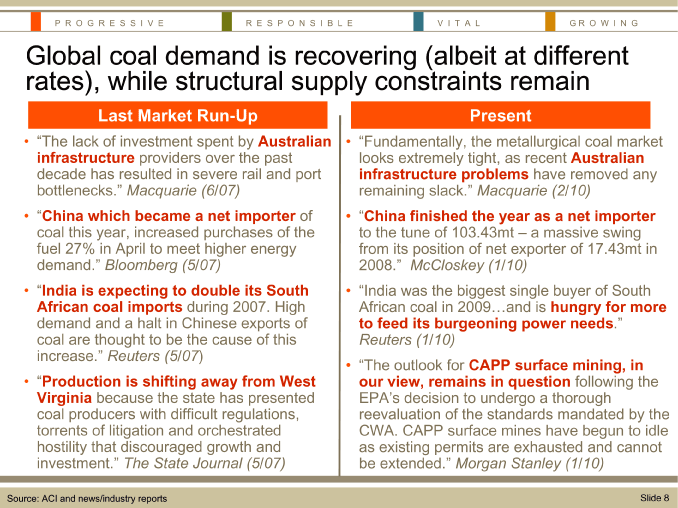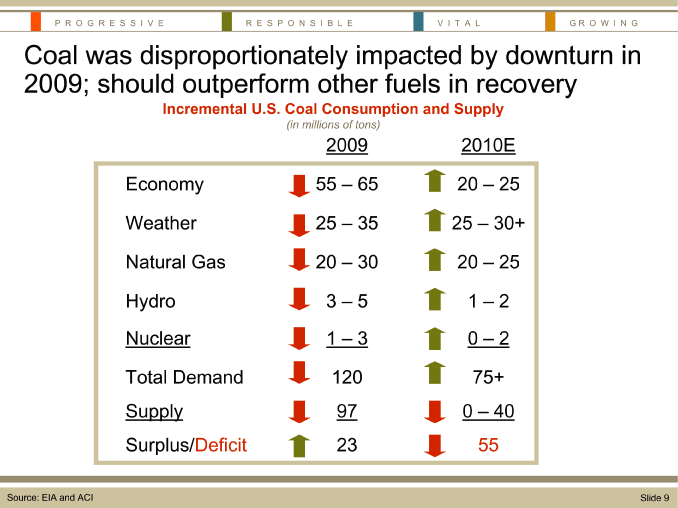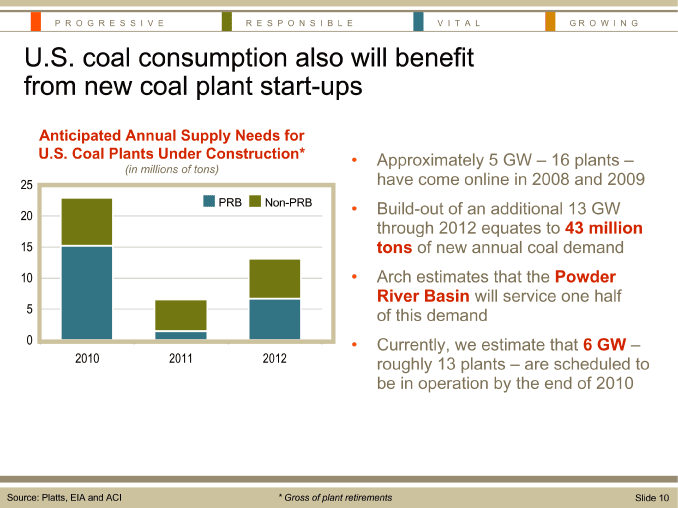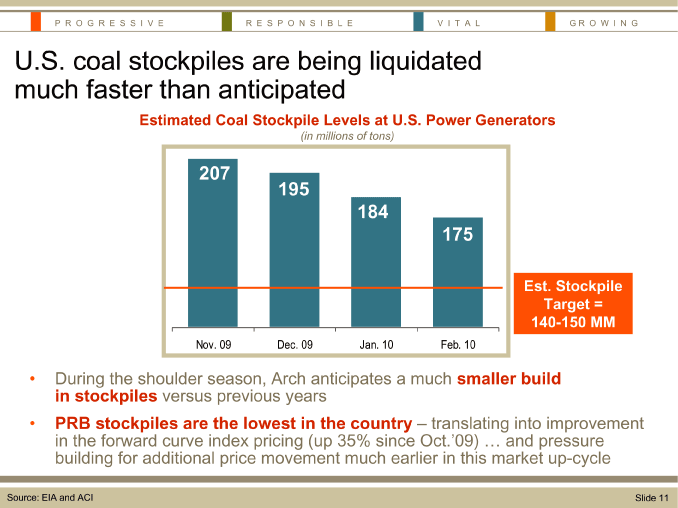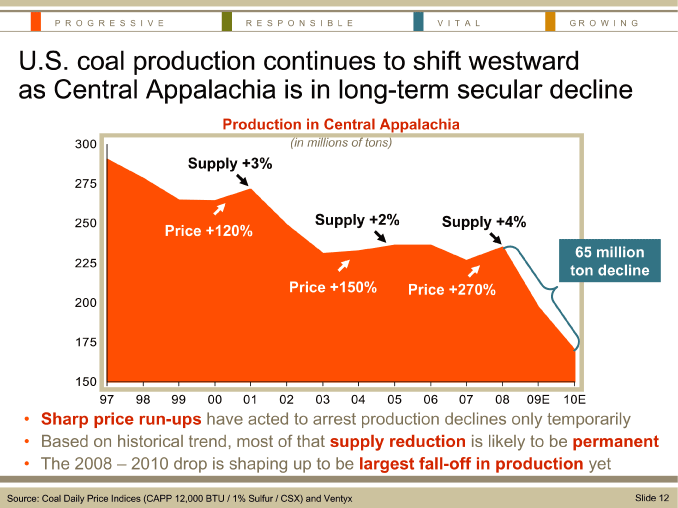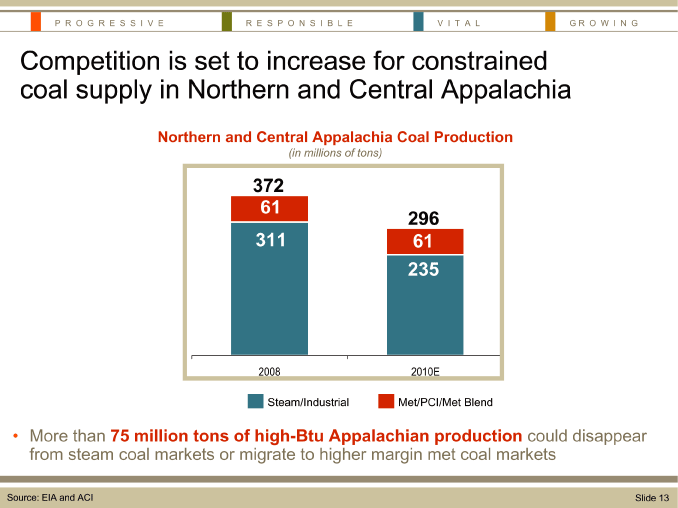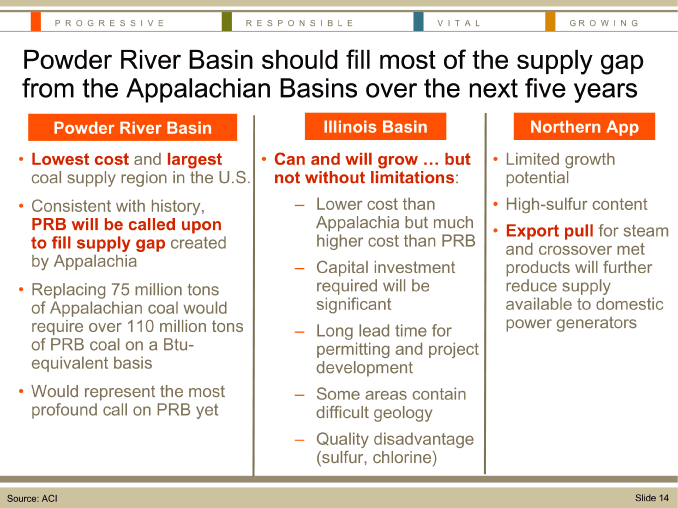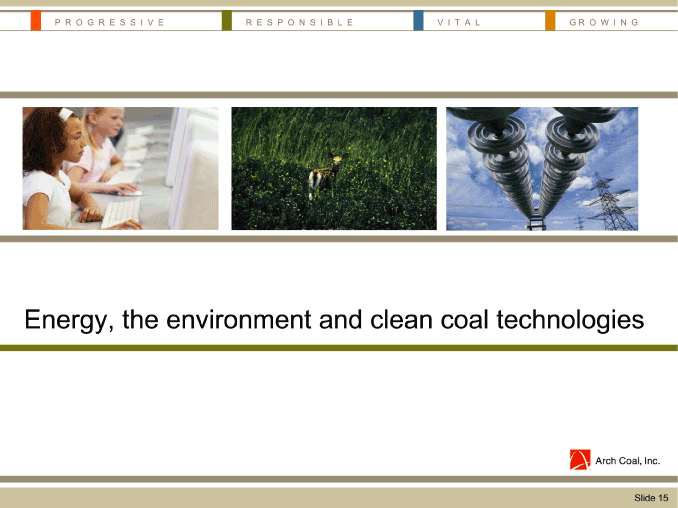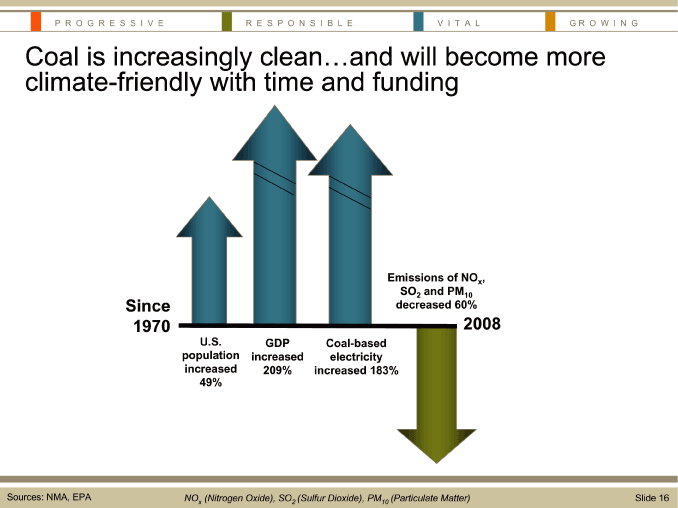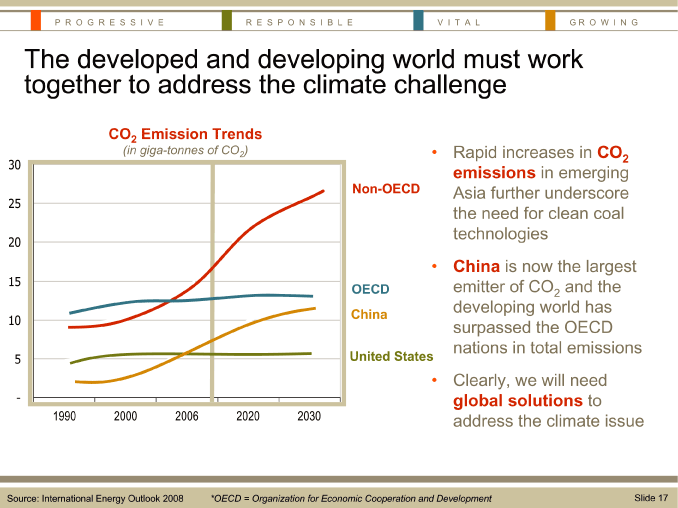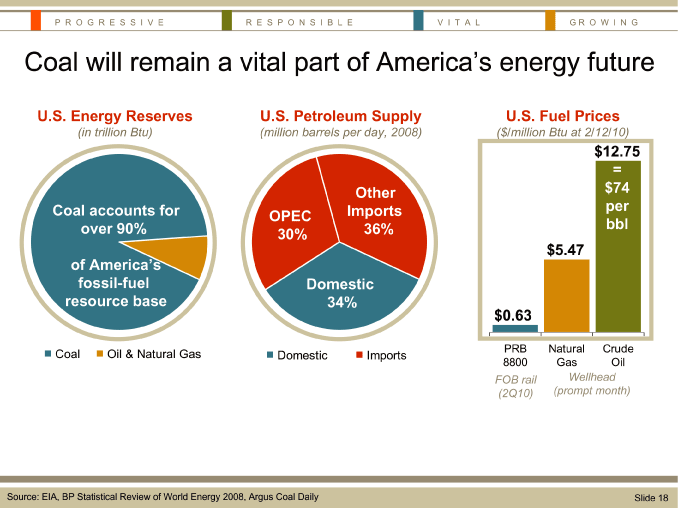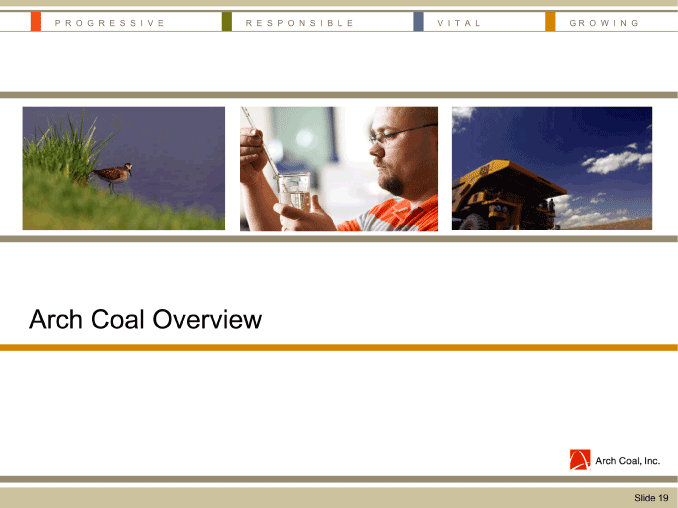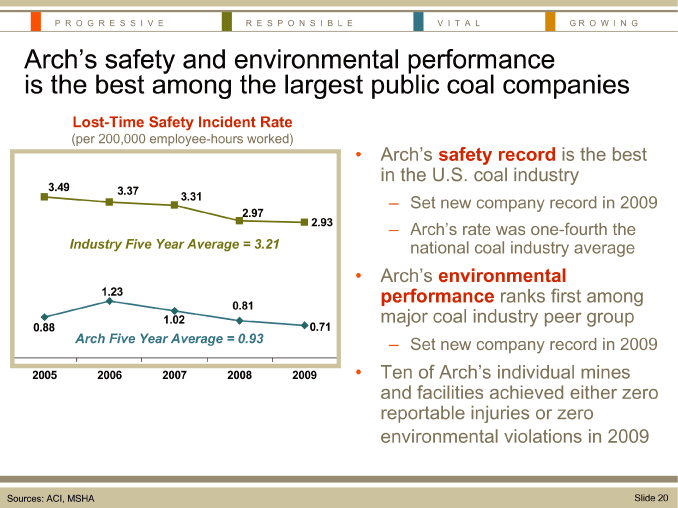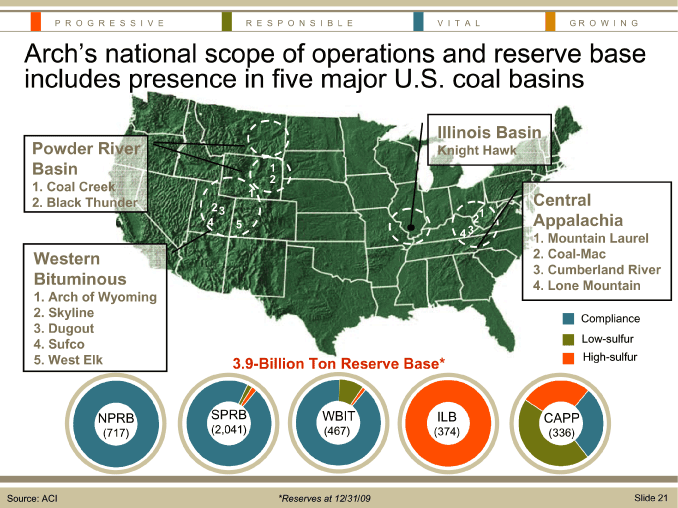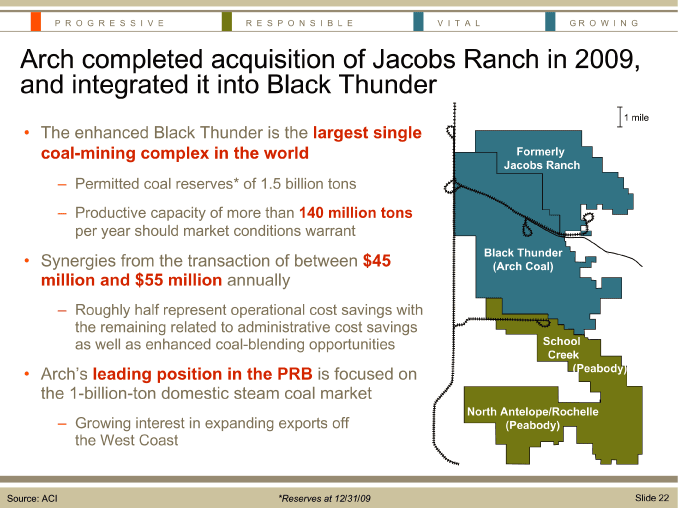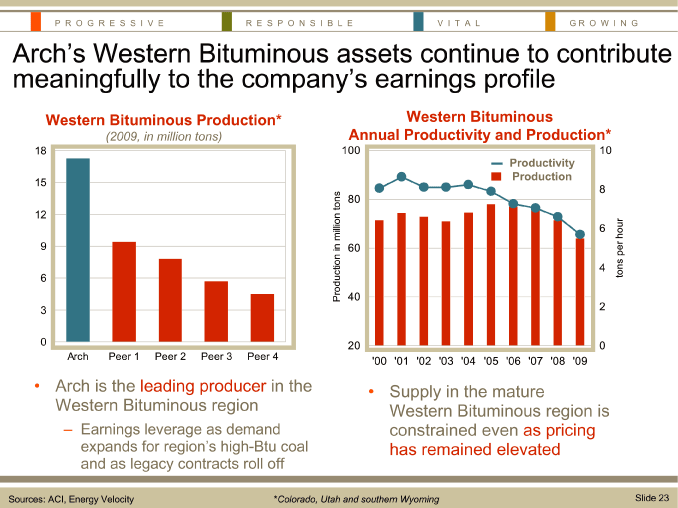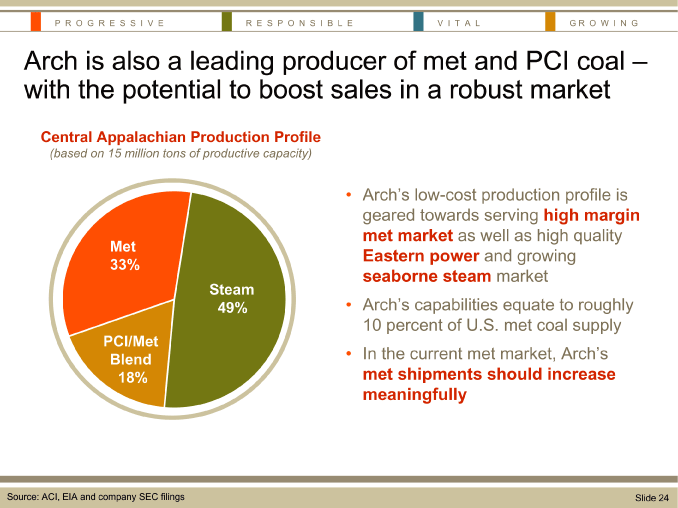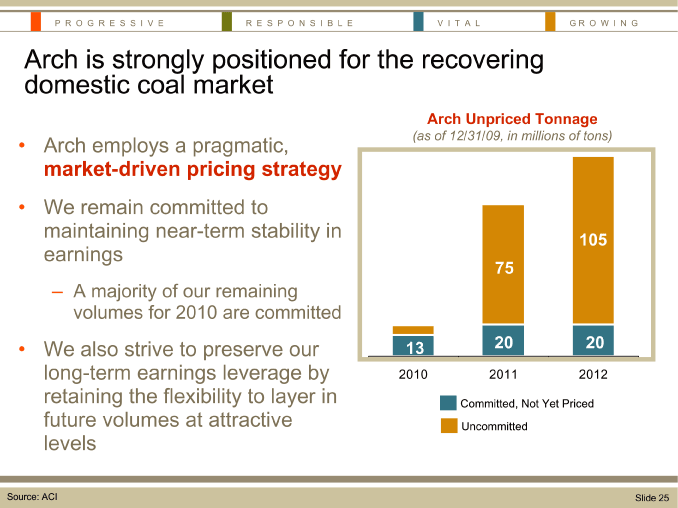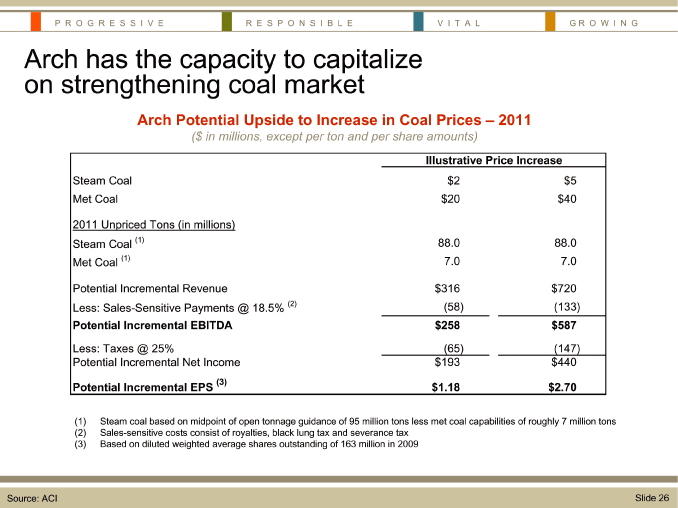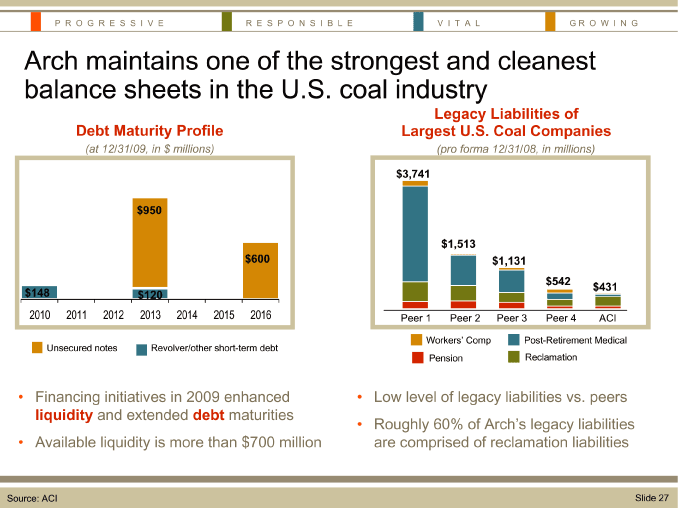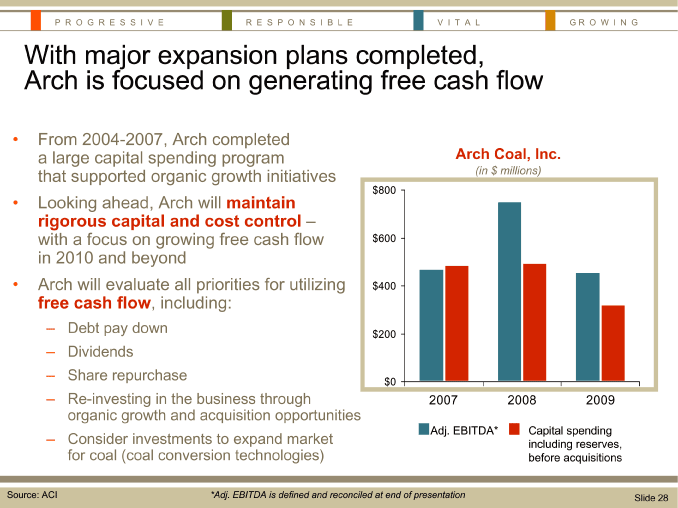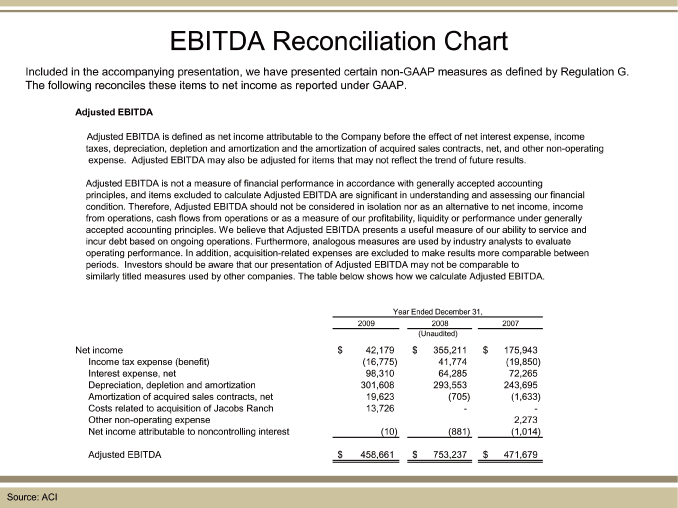| EBITDA Reconciliation Chart Included in the accompanying presentation, we have presented certain non-GAAP measures as defined by Regulation G. The following reconciles these items to net income as reported under GAAP. Adjusted EBITDA Adjusted EBITDA is defined as net income attributable to the Company before the effect of net interest expense, income taxes, depreciation, depletion and amortization and the amortization of acquired sales contracts, net, and other non-operating expense. Adjusted EBITDA may also be adjusted for items that may not reflect the trend of future results. Adjusted EBITDA is not a measure of financial performance in accordance with generally accepted accounting principles, and items excluded to calculate Adjusted EBITDA are significant in understanding and assessing our financial condition. Therefore, Adjusted EBITDA should not be considered in isolation nor as an alternative to net income, income from operations, cash flows from operations or as a measure of our profitability, liquidity or performance under generally accepted accounting principles. We believe that Adjusted EBITDA presents a useful measure of our ability to service and incur debt based on ongoing operations. Furthermore, analogous measures are used by industry analysts to evaluate operating performance. In addition, acquisition-related expenses are excluded to make results more comparable between periods. Investors should be aware that our presentation of Adjusted EBITDA may not be comparable to similarly titled measures used by other companies. The table below shows how we calculate Adjusted EBITDA. Year Ended December 31, 2009 2008 2007 (Unaudited) Net income $42,179 $355,211 $175,943 Income tax expense (benefit) (16,775) 41,774 (19,850) Interest expense, net 98,310 64,285 72,265 Depreciation, depletion and amortization 301,608 293,553 243,695 Amortization of acquired sales contracts, net 19,623 (705) (1,633) Costs related to acquisition of Jacobs Ranch 13,726 — -Other non-operating expense 2,273 Net income attributable to noncontrolling interest (10) (881) (1,014) Adjusted EBITDA $458,661 $753,237 $471,679 Source: ACI |

